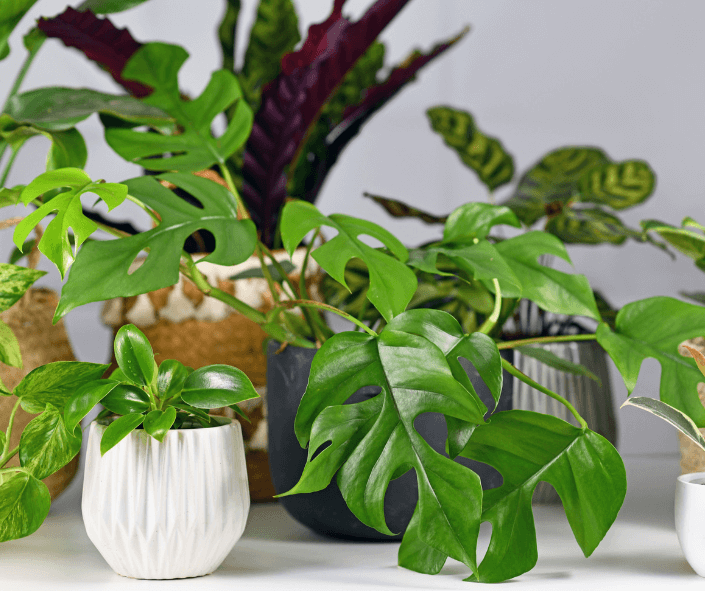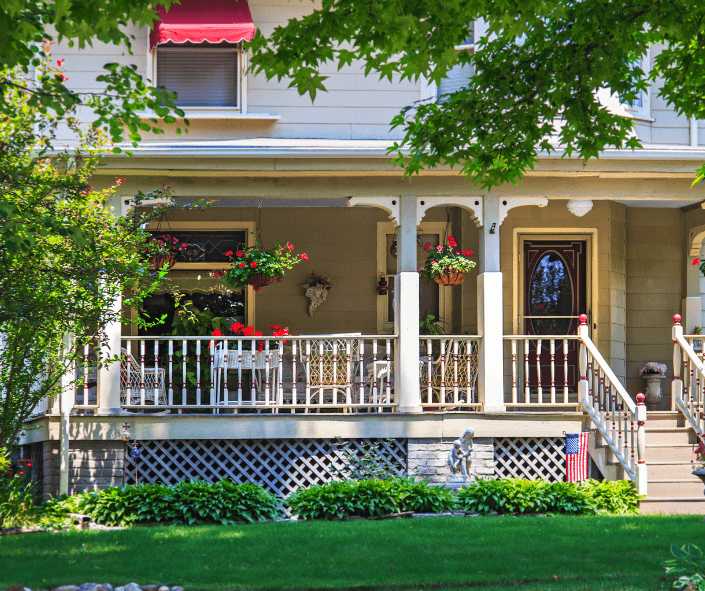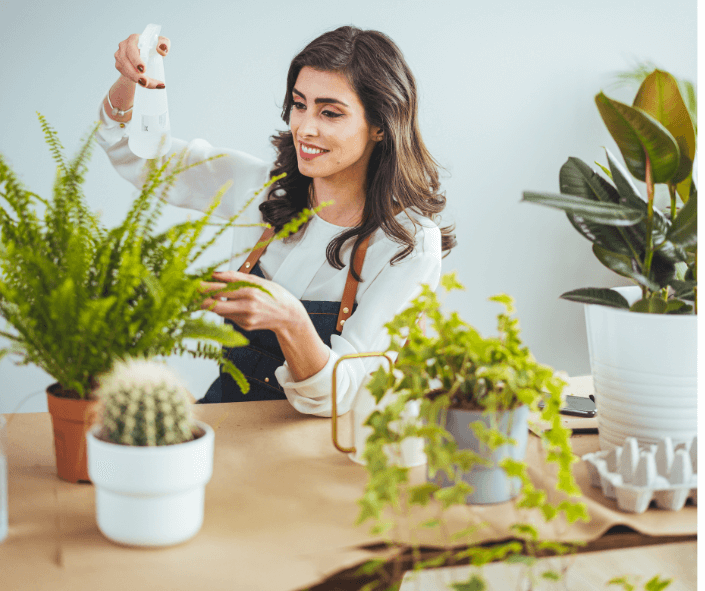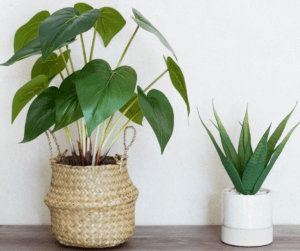
Houses are often stuffy for plants when the weather is mild and pleasant. Most houseplants thrive in the fresh air, natural sunlight light, humidity, and warm temperatures. For these reasons, it’s smart to bring tender houseplants outdoors in the summer months. But, four precautions must be taken before you take them outdoors and bring them back indoors in the fall.
As a preliminary note, I tend to keep my houseplants on my front porch in the late spring, summer, and fall. There are spots with shade and partial sunlight, and I can control the water they get more readily. If you have a covered spot or porch it is the best outdoor spot for your houseplants. I have a houseplant stand to show them off beautifully through summer.
Steps to Taking Plants Outdoors in the Spring

- Make sure the outdoor temperature will stay warm and night frosts are past. I always check the Almanac’s last frost date to determine the last frost date in my area.
- Some tropical plants cannot tolerate temperatures below 45-50 degrees. Therefore, it is important to know the temperature needs of your plants. In general, most tropical houseplants like daytime temperatures between 65 and 75°F (15-24°C) and nighttime temperatures between 60-68°F.
- Repot plants as needed to make sure they are not rootbound. If they are root stressed during summer, they will be unhappy and require water more often. (Click here to read a good article about repotting houseplants.)

Rootbound plants should be upgraded/repotted before being taken outdoors for summer. - Feed plants at the start of the season. Choose a fertilizer that’s suited to your plant. Specialty fertilizers include those for orchids, succulents, and tropical foliage plants. Be sure to follow the product instructions. For those gardeners seeking an easy option, try using a quality slow-release fertilizer, such as Proven Winners Continuous Release Plant Food.
- Wait to place sun-loving houseplants in the direct sun, and all houseplants should be protected from strong winds until they have become more acclimated to outdoor temperatures. In-home conditions are more regulated than outdoor weather, so plants need time to adjust. After a week or two, most plants will be tougher and better able to withstand the greater extremes of outdoor weather.
- Plan to water your plants more often as the days become warmer. Plants subjected to wind and higher temperatures tend to need water more often. Check your plants regularly until you have established a rhythm.

Steps to Taking Plants Indoors in the Fall

- Once again, check to make sure your plants are not rootbound. If their roots fill the pot, then it is time to repot them in quality potting mix like Fafard Professional Potting Mix. The new pot space will allow plants to grow new roots and take up more fertilizer and moisture when brought indoors.
-

Place plants in an area with comparable light to reduce stress. Look at your plant’s foliage, and make sure they are pest-free before taking them inside. Foliar pests like spider mites, white flies, and aphids eventually cause leaf drop and plant stress, especially indoors. Wash your houseplant’s leaves under the gentle water of the kitchen sink, and spray them with insecticidal soap before bringing them inside. I also recommend removing and replenishing the top two inches of potting soil to catch any pests hanging out in the upper soil layers, such as fungus gnats. (Click here to read a great overview of common houseplant pests.)
- Move them to a location with the same light and humidity indoors that they enjoyed outdoors. Try to replicate the outdoor conditions as much as you can. If not possible, the plants may drop a few leaves as they adjust to the transition.
- Keep the soil moist, but not too wet. Outdoor plants lose soil water faster due to higher temperatures and wind. Indoors, they generally need less water.
If your houseplants drop a few leaves in transition, don’t worry. Just clean off the dead leaves, give the plants good care, and they should pop back in no time!

